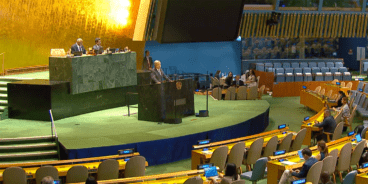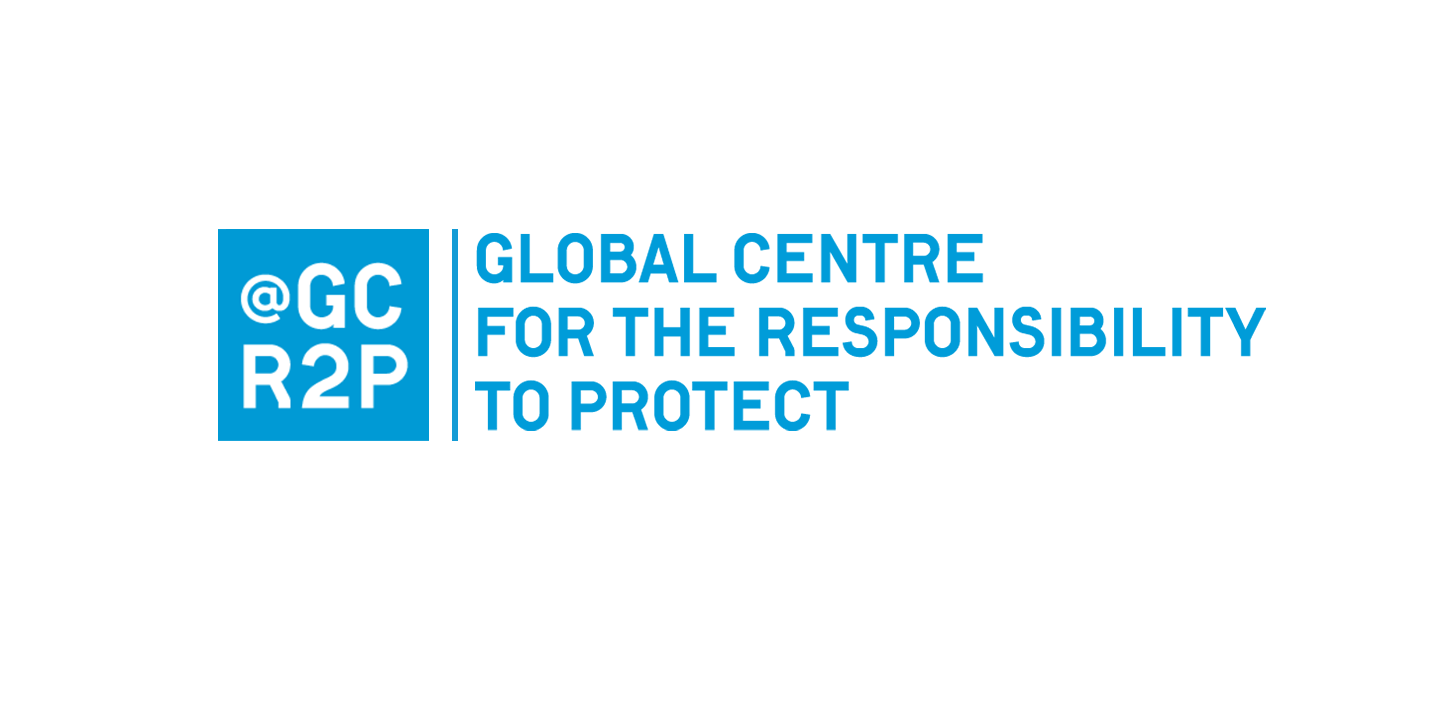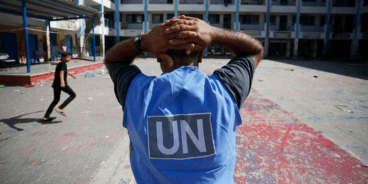

Summary of the UN Secretary-General’s 2025 Report on R2P, Responsibility to Protect: 20 years of commitment to principled and collective action
The UN Secretary-General issued the 17th report on the Responsibility to Protect (R2P) titled “Responsibility to Protect: 20 years of commitment to principled and collective action.” As the international community marks two decades since the adoption of R2P at the 2005 World Summit, the Secretary-General reflects on a troubling trend: despite the unanimous commitment to end atrocity crimes, such crimes have increased around the world, exposing a persistent gap between promises and meaningful action, particularly in the world’s gravest cases. The Secretary-General issues a stark warning, noting that continued failures to protect populations – despite our improved understanding of risk factors and enhanced capacity for response – denote a deeper, alarming challenge to mobilizing response. To address these challenges, the Secretary-General emphasizes the urgent need for renewed strategic investment and consistent, collective international action, offering concrete recommendations to more effectively implement R2P’s three pillars moving forward.
KEY POINTS
The Global Centre for the Responsibility to Protect would like to highlight the following key points from the report:
-
-
- The pattern of state and non-state actors acting with blatant and systematic disregard for International Humanitarian Law (IHL) and International Human Rights Law (IHRL) continues to expand exponentially. Such violations and abuses of IHL and IHRL may constitute genocide, war crimes, crimes against humanity and/or ethnic cleansing or enable the commission of these crimes. Civilians are bearing the brunt of these abuses, with violence against civilians now reaching its highest level since 2015.
- The profound change to the global peace and security landscape, including intensifying threats such as climate change, the weaponization of new technologies, misinformation and disinformation, growing inequality, shrinking civic space and the deterioration of human rights and the rule of law in many parts of the world is shaping the character and dynamics of atrocity crimes today. Selective practices, double standards and failures to take concerted action in response to early warning information further inhibit the capacity to consistently prevent these crimes.
- These patterns of abuses notwithstanding, in the last two decades, considerable progress has been made in capacities to prevent and respond to atrocities at the national, regional and multilateral levels and in the conceptual development and understanding of R2P. To understand the holistic impact of these measures, states must examine efforts explicitly conducted under the aegis of R2P alongside complementary actions taken as part of their IHL obligations and the promotion and protection of human rights.
- To address new and emerging threats, the international community will need to ensure that as they uphold principles agreed to in new agendas – such as the Global Digital Compact and the Pact for the Future – they concurrently utilize the lens of implementing R2P.
- Civil society organizations, like the Global Centre for the Responsibility to Protect, play a key role in advancing atrocity prevention at the national, regional and global levels. Engaging with international civil society and local organizations who work with at-risk communities is essential in detecting early warning signs of atrocity crimes and supporting the development of long-term prevention strategies.
- The Secretary-General highlights three main areas for action to strengthen the international response to the risk of atrocity crimes: (1) prioritize the development of permanent preventive mechanisms at the national level; (2) share experiences and lessons learned on prevention and strengthen relations between national and regional entities in regional consultations; and (3) explore the development of strategic and technical guidance on implementing the responsibility to protect at the domestic, regional and multilateral levels.
-
SECTION II. Global context and emerging patterns of atrocity crimes
In this section, the Secretary-General contextualizes the patterns and impact of atrocity crimes across current global trends. This section underscores that the rising occurrence of atrocity crimes and the persistence of impunity signal a concerning erosion of compliance with legal obligations and international norms. The Secretary-General emphasizes that, although the formal determination of mass atrocity crimes rests with national and international courts, early warning and credible allegations too often fail to prompt timely and effective preventive or protective action.
Historic number of global conflicts characterized by atrocity crimes
Over the past two decades, there has been a historic increase in violent conflicts not seen since World War II, with a significant rise in crises that are characterized by atrocity crimes. Across many countries, fundamental rights and freedoms are being eroded, with growing instances of repression and persecution against populations based on national, ethnic, racial and religious identity, or on actual and perceived political ideology. The Secretary-General acknowledges several ongoing crises where civilians are bearing the brunt of violations of international law that may amount to war crimes and crimes against humanity, including in the Democratic Republic of the Congo, Ethiopia, Israel and the Occupied Palestinian Territory (OPT), Myanmar, Sudan, Ukraine and Yemen. Inter-state conflicts involving regional and international actors are playing an increasingly prominent role in today’s global peace and security landscape.
The Secretary-General underscores despite clear violations of international law, in some cases certain UN member states continue to provide financial and military support or actively weaken institutions responsible for ensuring accountability. While many countries are pursuing sustainable resolutions to conflicts, the Secretary-General warned of the consequences of Security Council (UNSC) paralysis – due to the frequency of the use or threat of the veto by the Permanent Members – fueling perceptions of double standards and undermining effective international action.
Humanitarian impact of conflict
Recent armed conflicts are increasingly marked by blatant violations of core principles of IHL — such as distinction, proportionality and precaution – leading to a heightened risk of atrocity crimes. The report highlights how large-scale conflicts in the Greak Lakes region, Lake Chad Basin, the Sahel, Sudan, Ukraine, Myanmar and elsewhere have resulted in significant civilian casualties. These deaths often result from indiscriminate or identity-based attacks. Beyond loss of life, the destruction of civilian infrastructure has led to mass displacement. The report notes that the number of forcibly displaced people has grown dramatically – from 37 million in 2005 to a record 123 million by October 2024. These populations, especially vulnerable groups such as minority groups, people with disabilities and the elderly, face grave protection risks, including violence, disappearances, torture, forced recruitment and gender-based violence – some of which may amount to atrocity crimes. The use of counter-terrorism measures, along with the involvement of mercenaries and private military contractors, has worsened human rights abuses in some areas. These actions frequently allow perpetrators to sidestep accountability, deepening impunity and normalizing such violations.
Access to humanitarian assistance and attacks against humanitarian workers
The report discusses the severe restrictions on humanitarian access in conflict zones, as well as attacks on humanitarian workers, exacerbating the suffering of civilian populations. Although the UNSC has condemned the use of starvation as a method of warfare and emphasized the legal obligation to ensure civilian access to aid, in 2024 blockades and restricted access to essential goods significantly affected civilians in the OPT, North Darfur, Syria and Yemen, resulting in acute food insecurity. The intentional destruction of health facilities and targeted attacks on medical workers result in tremendous human suffering and potential mass atrocity crimes. The Secretary-General underscores that deliberate attacks on medical facilities and personnel protected under IHL constitute war crimes.
Use of explosive weapons and new technologies in populated areas
Parties to conflicts are increasingly using methods and means of warfare that show a blatant disregard for human life, in clear violation of international law and treaty obligations. This trend includes the widespread use of explosive weapons in populated areas – such as aerial bombardments, missile strikes and improvised explosive devices – and deliberate attacks on civilian infrastructure. The indiscriminate use of such weapons is the primary cause of civilian casualties and the destruction of civilian objects. The Secretary-General expresses growing concern over the expanding use of artificial intelligence and new technologies, warning that these technologies can obscure accountability, lower the threshold for the use of force and may amplify the scale of atrocity crimes without proper safeguards.
Atrocity crimes in non-armed conflict contexts
Atrocity crimes often arise from deeply rooted injustices, human rights abuses and exclusionary practices that, if ignored, can escalate into collective violence. Fragile states are particularly vulnerable to such violence, with the suppression of civil and political rights a potential early warning sign. Atrocity risks are further heightened in contexts facing governance breakdown, political instability or democratic backsliding. The Secretary-General highlights alarming trends, including increased attacks on journalists, the rise of racism and hate speech targeting minority groups and the manipulation of technology and social media to spread harmful ideologies, dehumanization and incitement – factors that significantly raise the risk of atrocity crimes. Discrimination and violence based on sexual orientation and gender identity, along with restrictions on freedoms of expression, assembly and association, contribute to an atmosphere of fear and self-censorship. These factors increase the risk of identity-based atrocity crimes. Indigenous Peoples face heightened risks due to ongoing legacies of violence, displacement and discrimination, despite legal protections.
The Secretary-General asserts that promoting diversity and protecting minority and Indigenous Peoples’ rights, along with broader civil, political, economic and cultural rights, is essential to building societal resilience and preventing atrocity crimes. The protection of civic space, freedom of expression and democratic governance is crucial.
SECTION III. Fulfilling the objectives of the responsibility to protect: good practices and lessons learned, 2005–2025
Despite persistent challenges, the Secretary-General acknowledges various national, regional and multilateral efforts that have supported the implementation of R2P. This section highlights progress made in areas of prevention, protection and accountability since R2P’s adoption.
National prevention strategies
Since 2005 more than a dozen member states have created specific national mechanisms aimed at preventing atrocity crimes, in line with regional protocols like the Great Lakes Region’s initiative. These developments build on the foundational work of the African Union (AU) and the International Commission on Intervention and State Sovereignty in shaping R2P. Momentum around these mechanisms increased following early UN reports encouraging states to incorporate R2P principles within their own frameworks.
The New Agenda for Peace further emphasizes states’ primary responsibility for conflict prevention and peacebuilding, urging the development of national strategies that incorporate atrocity prevention. National human rights institutions, now present in 118 countries, play a vital role in addressing structural vulnerabilities and preventing recurrence. Strengthening their capacity to apply an atrocity prevention lens offers a key opportunity to reinforce domestic implementation of R2P.
Member states have also formed international and regional partnerships to strengthen atrocity prevention through the exchange of best practices and collaborative tools. Key initiatives include participation in the Global Action Against Mass Atrocity Crimes (GAAMAC) and appointing a national R2P Focal Point. Parliamentarians for Global Action has also released a guidance note to help lawmakers in 141 parliaments integrate atrocity prevention into its network.
Transitional justice is increasingly used to address the aftermath of atrocity crimes, promote accountability and prevent recurrence – reflected in peace agreements in countries like Colombia, Nepal, the Philippines and Timor-Leste. Additionally, several countries have acknowledged their roles in historical crimes and taken steps to address these harms through inclusive and diversity-oriented approaches.
Regional initiatives
Regional and subregional organizations play a vital role in implementing R2P. Organizations such as the AU, Organization of American States (OAS) and the Organization for Security and Cooperation in Europe (OSCE) have effectively used tools like mediation and preventive diplomacy to resolve conflicts and protect civilians. A notable example is the 2017 joint intervention by the AU and Economic Community of West African States in the Gambia’s post-election crisis, which helped prevent escalation. The AU has recently appointed a Special Envoy for the Prevention of Genocide and Mass Atrocities. The European Union and OAS have created specialized manuals and toolkits to build early warning and response capacities, while OSCE supports national efforts to uphold human rights, prevent ethnic violence, and build democratic institutions. The Association of Southeast Asian Nations (ASEAN) Intergovernmental Commission on Human Rights and the ASEAN Parliamentarians for Human Rights support atrocity prevention through regional declarations and advocacy for vulnerable populations.
Moreover, the Secretary-General demonstrates how regional networks involving civil society and experts have been instrumental in advancing early warning, protection measures and countering hate speech through training and knowledge sharing.
Mobilization of the responsibility to protect by Member States through multilateral bodies
Rising polarization and attacks on international norms have threatened multilateralism, but member states have responded with innovative strategies to advance atrocity prevention and accountability. The Group of Friends of R2P has promoted the norm through joint statements and resolutions across key UN bodies. International and domestic courts have played a growing role in accountability, with the International Court of Justice hearing cases under the Genocide Convention and the International Criminal Court investigating 15 situations involving war crimes and crimes against humanity.
Over the past two decades, various UN bodies have increasingly referenced R2P in resolutions, helping to build a shared framework for action. Discussions among member states have focused on operationalizing R2P’s third pillar, including initiatives to counter UNSC inaction, such as the ACT Group’s Code of Conduct, the French-Mexican veto restraint initiative and General Assembly Resolution 76/262, requiring debate in the General Assembly after a veto is used. The Human Rights Council also plays an essential role in implementing R2P through its various procedures and mechanisms. Investigative mechanisms, Special Procedures, the Universal Periodic Review and Treaty Bodies are all uniquely suited to provide early warning for situations at risk of atrocity crimes and help concerned states, as well as the wider international community, to identify necessary prevention and response strategies.
The Secretary-General highlights how progress toward a legally binding international treaty on crimes against humanity – offers a crucial opportunity to address a significant legal gap in the atrocity prevention framework.
Deeper integration of the responsibility to protect across the United Nations system
Preventing and protecting populations from atrocity crimes demands a coordinated, system-wide approach. The UN Office on Genocide Prevention and the Responsibility to Protect plays a key role by issuing early warnings, offering policy recommendations and collaborating with member states, regional bodies and civil society. Tools like the Framework of Analysis for Atrocity Crimes and the UN Strategy on Hate Speech support this work and have helped standardize prevention practices.
The Secretary-General demonstrates that significant progress has been made across the UN system to build prevention and early warning capacities, including reforms in peacekeeping, the creation of the UN peacebuilding architecture and expanded mediation and diplomacy capabilities. Humanitarian and crisis response agencies contribute to protection on the ground, underscoring the importance of assessing the threat of atrocity crimes. The ongoing 2025 review of the UN peacebuilding architecture presents an opportunity to strengthen atrocity prevention efforts system-wide by integrating this lens into field operations and strategic planning. Various thematic agendas, such as those on Children and Armed Conflict, Women, Peace and Security and the Protection of Civilians, have also helped embed R2P principles into UN operations.
SECTION IV. Responsibility to protect: conceptual development, 2005–2025
In this section, the Secretary-General reflects on the conceptual progress in developing R2P, shaped by member states, civil society and the UN system, as well as enduring normative and operational challenges.
The annual reports of the Secretary-General and General Assembly dialogues have served as the UN’s primary platforms for advancing R2P’s understanding and implementation. The 2009 introduction of the three-pillar framework marked a turning point, followed by thematic reports on key issues such as early warning, regional cooperation and mobilizing collective action. Recent reports have increasingly linked atrocity prevention to broader agendas like human rights, gender equality, youth engagement, sustainable development and accountability.
To be more effective, R2P must be supported by innovative partnerships, inclusive national strategies and consistent engagement across all three pillars. Despite growing global challenges, the Secretary-General stresses that the fundamental conviction underlying R2P remains and that realizing its full potential will require renewed political will and creative approaches to fulfill the promise of “never again.”
SECTION V. CONCLUSIONS AND NEXT STEPS
Over the past two decades, R2P has proven to be a relevant and practical framework for addressing complex crises and guide for states in line with the UN Charter. However, as global challenges evolve, there is a pressing need to turn two decades of conceptual progress and operationalization into consistent action that effectively prevents atrocity crimes and protects vulnerable populations.
The report outlines three priority areas for future action: (1) establishing permanent national prevention mechanisms, (2) enhancing regional dialogue to share lessons and strengthen cooperation and (3) developing technical guidance for implementing R2P at all levels.
The Secretary-General urges member states to engage with the Special Adviser on R2P and participate in the General Assembly’s annual R2P debate to share best practices and reflect on implementation of prior recommendations. Ultimately, R2P represents a collective commitment to preventing atrocity crimes and safeguarding humanity. The true measure of the international community’s success lies in its willingness and capacity to uphold this responsibility.
Related Content


The Perils of Loosening Hate Speech Protections
